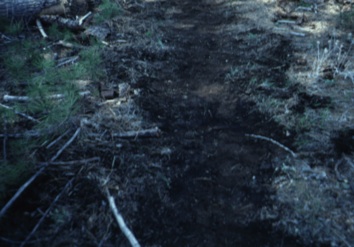


Suppression effects are not limited to wild fires but also can occur during prescribed fires. These effects are those caused by humans physically manipulation of fuels, vegetation, soils, water, fire retardants, artifacts and features during the attempt to limit the spread of a fire. These effects are not always in the immediate vicinity of fire but can occur miles away through the construction of camps, fireline, etc.

Fire Lines are breaks in fuel continuity, of which there are several varieties. Generally these boundaries are comprised of a combination of natural (e.g., rock outcrop, river) and human-made (e.g., road, handline, wet line, catline). Usually fire lines are constructed by removing live vegetation, and dead-and-down fuels to mineral soil, and felling of hazard trees.
Staging involves the distribution of people and equipment before, during and after the fire event. This can include parking vehicles and storage of equipment, such as hoses and drip torches. Staging can occur both close to developed areas such as roads, parking lots, and pullouts or in remote areas. In more remote locations, established trails often function as access and travel corridors to and within a fire. Spike camps might be placed at established backcountry camps, or new ones created at optimal places. Ground disturbances might include increased foot traffic, and the excavation of latrines and pits for gray water disposal. A heli-spot or drop spot is often located nearby, and these will be constructed (by clearing vegetation) if necessary.
Helispots - location where helicopter lands
Longline drop sites - location where equipment is dropped via a longline hanging from the belly of a helicopter
Temporary Repeaters - placement of electronic equipment, radio repeater, batteries, antenna, rebar stakes
Using fire to fight fire
Backfire - Also defined as a fire set along the inner edge of a control line to consume fuel in the path of a wildland fire and/or change the direction of force of fire’s convection column. It is an indirect firefighting method which eliminates fuel in advance of the fire and slows fire’s progress or changes direction of fire. Decision made by operations chief and approved by the incident commander.
Burnout - Setting fire inside a control line to consume fuel between the edge of the fire and the control line. Burnout is a direct firefighting technique that strengthens/secures line. It reduces required holding forces and reduces mop up/cold trailing. Decision made by crew boss and is an on-going part of line construction. It cleans up fingers and scabby burn areas.
Counter fire - fire set between the main fire and the backfire to hasten the spread of the backfire.

Water and dirt are commonly used by hand crews and individual fire fighters causing damage through movement of artifacts or water saturation.
Foams, gels and slurries are chemical agents mixed with water and are usually used injunction while mechanical applicators, i.e. fire engines, helicopters and aircraft. Foams are used to reduce surface tension, penetrate into fuels, thus extending the increasing the area each gallon of water can protect. Gels and slurries increase water viscosity (i.e., thickening agents), decreasing run off and increasing evaporative time. Foams, gels and slurries can damage cultural resource through both the delivery via high velocity drops which can topple standing walls, or displace artifact scatters and chemical reaction and/or adhesion between the agent and artifacts or structure.
For more information see the BLM report on the effects of retardant on historic resources
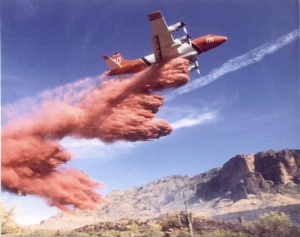
Application of fire retardant and other chemical products has the potential to affect cultural resources, although use of fire retardants on historic structures may protect them from destruction during a fire. Cultural resource specialists may need to consider the effects of fire itself versus the effects of retardant use or the possibility of other protection options during a fire. See these references for further information: Saleen 2004, Corbeil 2002, and the USDA Wildland Fire Chemical Systems website.
There are various types of products:
-
• Long-term retardants, which contain salts (fertilizers) with additives that may color covered items red or which may turn metals bluish;
-
• Foam fire suppressants, which are detergents and surfactants (wetting agents);
-
• Water enhancers which increase the effectiveness of water.
-
• There are various potential effects from use of retardants, foams, and water:
-
•Rapid cooling: dumps of any of these materials on hot surfaces may cause effects to archaeological materials (e.g. artifact fracture) from rapid temperature change;
-
•Materials dumped onto fragile archaeological features may break/ displace them;
-
•Long-term retardants contain salts which can be desiccants, which damage old, fragile wood and may cause spalling in sandstone; chemicals may cause corrosion in metals; iron oxide additives may leave a permanent red stain and corrosion inhibitors in the retardant may turn surfaces, especially metals, blue or black;
-
•Foams may hasten rusting on metal surfaces by removing protective coatings and may cause wood to flake due to swelling and contracting;
-
•Water enhancers are desiccants and may damage wood surfaces, strip surfaces of finishes, and damage sandstone; they are also difficult to remove from wood surfaces, especially for old or fragile wood.
-
•Retardant should be washed off important structures as soon as possible. Pre-soaking, then hand-brushing with water and a mild detergent may work for sandstone or painted wood. Metals and glass may be wiped with water and a mild detergent. Power washing, sand-blasting, and acid based washes may damage historic materials.
-
•There are various potential effects from use of retardants, foams, and water:
-
•Rapid cooling: dumps of any of these materials on hot surfaces may cause effects to archaeological materials (e.g. artifact fracture) from rapid temperature change;
-
•Materials dumped onto fragile archaeological features may break/ displace them;
-
•Long-term retardants contain salts which can be desiccants, which damage old, fragile wood and may cause spalling in sandstone; chemicals may cause corrosion in metals; iron oxide additives may leave a permanent red stain and corrosion inhibitors in the retardant may turn surfaces, especially metals, blue or black;
-
•Foams may hasten rusting on metal surfaces by removing protective coatings and may cause wood to flake due to swelling and contracting;
-
•Water enhancers are desiccants and may damage wood surfaces, strip surfaces of finishes, and damage sandstone; they are also difficult to remove from wood surfaces, especially for old or fragile wood.
-
•Retardant should be washed off important structures as soon as possible. Pre-soaking, then hand-brushing with water and a mild detergent may work for sandstone or painted wood. Metals and glass may be wiped with water and a mild detergent. Power washing, sand-blasting, and acid based washes may damage historic materials.
Oppelt and Oliverius (1993) have demonstrated that the application of fire retardant foam during burning will induce thermal shock among Mesa Verde Pottery sherds.
Links to information on wildland fire chemicals: http://www.fs.fed.us/rm/fire/
Wildland Fire Chemical Products: (Brief descriptions of chemicals used): http://www.fs.fed.us/rm/fire/documents/defin.pdf
Wildland Fire Chemical Products Effects on Structures: http://www.fs.fed.us/rm/fire/retardants/current/gen/pdf/effstructure.pdf
Forest Service Environmental Assessment of Fire Retardant and Decision Notice Environmental Assessment (Includes Errata) Decision Notice / Finding of No Significant Impact Public Comments Biological Opinions: NOAA's National Marine Fisheries Service (NMFS) (2.92 MB)(July 25, 2008) U.S. Fish and Wildlife Service (46.41 MB) Forest Service and BLM Reporting Forms
Aerial Application of Fire Retardant
From the Coconino National Forest What is Fire Retardant? Informative article on effects and treatment of left-over slurry after the fire.
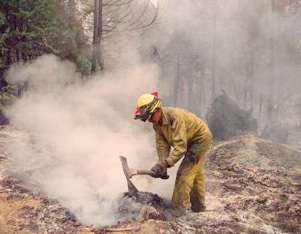
Mop-Up - is a concerted effort to extinguish all burning materials which can potentially ignite unburned fuels outside control lines. This is done through intensive hand labor, ground patrol, and/or aerial reconnaissance and is usually limited burned areas within a distance of the control firelines. This can involve extensive ground disturbance through the use of hand tools, hazard-tree felling, and hose lays. In forested areas, smoldering tree roots and stumps are often excavated and broken up.
The damage to cultural resources resulting from mop-up activities can vary greatly, but is usually in direct proportion to the visibility of the resource (i.e. ability of fire fighters to recognize that there is a sensitive resource). Mop-up activities generally can effect archaeological site through soil movement, mixing of strata, displacement of artifacts and/or artifact breakage.

Additional Information
Katz, S., and Katz, P., 1998. Archeological Survey and Resource Damage Assessment Resulting from the Construction of Fire Suppression Lines at the Site of the Palo Duro Fire, Potter and Moore Counties, Texas. Lake Meredith National Recreation Area and Alibates Flint Quarries National Monument, Fritch, Texas.
Oppelt, N. I., and Oliverius, T. J., 1993. The effects of fire retardant foam on prehistoric potsherds. Southwestern Lore 59, 26-30.
Swan, L., 1987. Working paper, Fires suppression and cultural resources. USDA Forest Service, California Region, pp. 1-6.

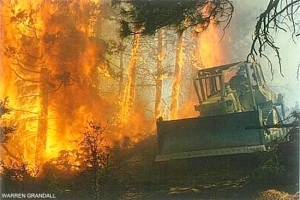
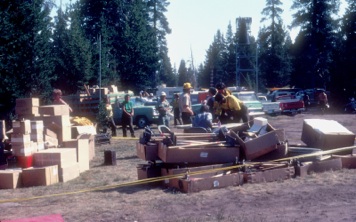
Updated January 1, 2010

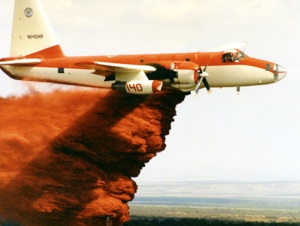

Constructed with much sweat by Linn Gassaway.
Remember conditions are not static so Not making a decision is a decision.
Be safe No archaeological site is worth a life.
This page is still under construction so please check back for additional information.
Website last updated October 26, 2011

